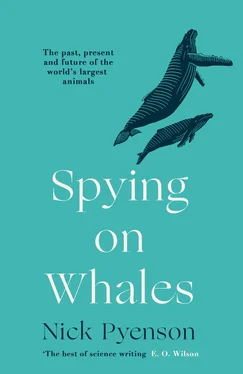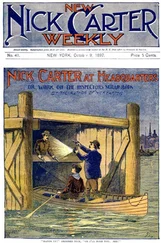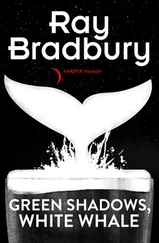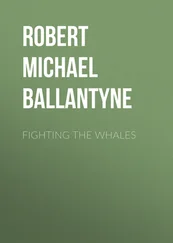Understanding how the Humboldt Current works, in the simplest terms, requires a step back to look at the coastal phenomenon of upwelling. When the Earth spins on its tilted axis, hot air rolls unevenly off the continents and transforms into trade winds over open ocean. These winds push hot water away from coastlines, and in its place arise enormous spirals of nutrient-rich water from the ocean’s depths, in a process called upwelling. Westerly coastlines across the world, from California to Chile to Angola, all share the right set of geographic features for this process. Upwelling forms the foundation for rich and productive ocean food webs because of the nutrients brought up from the deep: ocean water at the surface generally has enough oxygen, but it’s upwelling that carries nitrogen and phosphorus into shallower waters and enriches them by fertilizing both light-fixing phytoplankton and their consumers, zooplankton. The oceans may be vast, but upwelling creates specific places where these tiny organisms gather. Where there’s food to eat, that’s where whales, sardines, and penguins all want to be.
And if you’re a whale paleontologist, you want to be on the coast nearby, where upwelling and subduction combine in a perfect way. Upwelling gives us whales, and ultimately their remains—whale bones—to look for, while subduction uplifts ancient seafloors to dry land. Along with these two processes, the accident of the Atacama’s latitude makes the entire desert a gift for scientists seeking rocks: it’s devoid of grass, trees, and the blacktop of civilization. Arid and exposed badlands allow erosion to exhume the remains of ancient whales locked in rock without the interference of soil or tree roots.
Erosion helps, but paleontologists also have to find the right kind of rocks. Of the three categories, igneous, metamorphic, and sedimentary, for fossil whales only sedimentary rocks will do. Whales don’t preserve well in volcanic lava flows, and fossils hardly ever survive the tremendous heat and pressure that creates metamorphic rocks dozens of miles beneath the Earth’s surface. Among the array of sedimentary rocks, the most promising ones include mudstones, representing offshore seafloors, and sandstones, representing nearshore ones. Thanks to uplift, the only way to find fossils in the Atacama involves rolling across washes and mesas by foot or truck, finding these rocks, and keeping an eye out for a glint of bone. Whale bones tend to be relatively big, after all.
Since Darwin’s time, many thousands of bits of bone and teeth have been collected from the Caldera Basin, some ending up in natural history museums such as the one in Santiago, founded by Darwin’s correspondents. Fossil collections from Caldera consist almost entirely of fragments of skulls, limb bones, and teeth—never complete skeletons. But the little they show suggests that the Humboldt Current of the past was different: familiar species such as whales, sharks, and sea turtles lived alongside bizarre extinct ones, including nightmarish bony-toothed seabirds, long-snouted aquatic sloths, and school bus–size predatory sharks. When I started to contemplate working in the Atacama, the problem was that we didn’t have precise ages on all of these fossils in hand—we needed one complete chronicle of rocks in the Caldera Basin. Minimally we needed to identify the correct succession of layers these fossils came from, identifying oldest to youngest; at best, we hoped to pin down the ages of each fossil-bearing layer with numerical geologic dates. Once that context was arranged, we would be able to chart the rise and fall of each species over millions of years, against the backdrop of broader changes to ocean temperature, sea level, and circulation. Wear a geologist’s hat, find whale bones, and figure out the story of how the Humboldt Current’s ecosystem came to be.
After years of planning, correspondence, and false starts, I found myself sweating in the glare of the Atacama sun. I paused from scanning a geologic map of the Caldera Basin, spread across the hood of the Toyota pickup, and squinted, hoping to catch a glimpse of people summiting the flat top of a mesa in the distance. The harshness of the white light pinched my vision, split between the patchwork of colors on the map before me and the pale-blue dome above my head. I was frustrated, my mind elsewhere. We were late. The students on the field team hadn’t reconvened at the agreed-to time and we needed to keep moving.
We had followed the whale bone trail in the Atacama, and the trail led us straight into fault lines—many of them. Finding fossils wasn’t exactly our problem. Instead, it was their context. We were having a difficult time piecing together the succession of rock layers in which we were finding them. As tectonic processes uplifted ancient seafloors, they also broke them up, like a layer cake dropped on the floor. Consequently, deciphering the specific old-to-young sequence of layer upon layer of rock was complicated by long, vertical fractures that displaced the layers up and down relative to one another. We tend to think of geologic faults as stretching across hundreds of miles, and that’s certainly true for some of them. But they also manifest locally, in a rock outcrop that may be no broader than the side of a house. In the Caldera Basin, faulting sometimes created a jumbled layer of rock rather than a neat stack.
With boots on the ground, building a single chronology of rocks meant finding specific places where we could measure the thickness of the rock layer in a repeatable way, using a simple geologic tool called a Jacob’s staff. We would also note the composition, color, and texture of each rock layer. Occasionally we would also hammer out a sample of the most promising rocks—usually the ashes—in the hope of finding tiny volcanic grains that would yield precise geologic dates back in a laboratory. Through this slow, exacting work of measuring, describing, and sampling, we hoped to pin down actual dates in geologic time for enough layers in the sequence to understand the succession of different extinct species, whales and otherwise, that once lived in the Humboldt Current.
Back at the truck, however, I wasn’t thinking about geologic maps or envisioning layers of fossil whales captured through time. Instead, I was thinking about hours wasted, miles away from the air-conditioned convenience and sprawling desk work within my museum’s walls. I thought about all of the effort and time—coordinating airfares and truck rentals, pushing permits along, accounting for family and professional commitments. As the students crested the mesa, I waved at them. What I really wanted to do was slam on the truck’s horn until it was out of air.
Carolina Gutstein, my friend and colleague, then finishing her doctoral degree, stood with me at the truck. “You know, you can’t just rush people,” she leveled, without hesitation, sizing up my agitation like a sibling. “Trying to make things go faster here is only going to make them go a lot slower.” I laughed ever so slightly but stopped when I turned to look at her. Caro’s face was dispassionately still, her mountaineering sunglasses reflecting a stereo double of my own weary glance. I looked down in frustration, back toward the map on the hood, and exhaled. When I glanced her way again, she smiled, breaking the tension. “Why don’t we go see all those whales at Cerro Ballena?” she offered. “I’ll call Tuareg to show us around. He and Jim are over there now. You’re not going to believe it.”
Actually, I thought that I had good reason not to believe it, especially if it involved the man who calls himself Tuareg. His real name is Mario Suárez, and he is probably the single best fossil finder I have ever known. He demurs when asked, but Mario’s self-appointed nickname is clearly meant to evoke the stoic Berber people of the Sahara—an image he routinely betrays by losing his cell phone (he has lost more than a dozen) and completely going AWOL when needed (usually found at the nearest bakery). But at the time, we were strictly in his domain, working under his collecting permit, which he held as curator at the local paleontology museum in the town of Caldera.
Читать дальше












